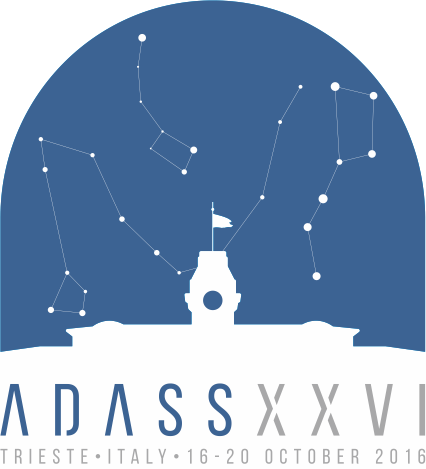Conforti Vito
Contact
- Position:
- INAF - Istituto di Astrofisica Spaziale e Fisica Cosmica, Bologna
- Address
- Italy
Miscellaneous Information
- Miscellaneous Information
-
Abstract Reference: 30431
Identifier: P8.9
Presentation: Poster presentation
Key Theme: 8 Other
Software Integration for the ASTRI SST-2M prototype proposed for the Cherenkov Telescope ArrayAuthors:
Conforti Vito, Bruno Pietro, Bulgarelli Andrea, Canestrari Rodolfo, Costa Alessandro, Andrea Di Paola, Fioretti Valentina, Gallozzi Stefano, Gianotti Fulvio, Grillo Alessandro, Malaguti Giuseppe, Mastropietro Michele, Russo F., Sangiorgi P., Schwarz J., Scuderi S., Tanci C., Trifoglio M., Testa V., Vercellone S., Zoli AThe Cherenkov Telescope Array (CTA) project is an international initiative to build a next generation ground-based observatory for very high energy gamma-rays. Three classes of telescopes with different dish sizes will cover the full energy range from 20 GeV up to 300 TeV. Full sky coverage will be provided by two arrays, located in the northern and southern hemispheres, respectively. The array in the southern hemisphere will include seventy small size telescopes (SST, 4m diameter). Their implementation has different phases. The ASTRI mini-array of CTA pre-production telescopes is one of the SST mini-arrays proposed to be installed at the CTA southern site. The construction of the ASTRI mini-array is an effort led by the Italian National Institute for Astrophysics (INAF) and carried on by institutes from Italy, Brazil, and South Africa. The ASTRI mini-array will be composed of nine ASTRI units based on the end-to-end prototype already installed on Mt. Etna (Italy) and that is currently undergoing engineering tests. The newly-formed ASTRI software integration team will manage software releases, their deployment and the preliminary integration tests. The aim of this team is to support the end-to-end prototype operations according to the system Assembly Integration and Verification (AIV) plan. The software components, individually deployed and first tested with their engineering Graphical User Interfaces (GUIs), are routinely used, and therefore verified in the overall system tests. This contribution presents the transition from the engineering test environment to the operation environment.



